A Complete, Usable Guide to Customer Satisfaction
Customer satisfaction is integral to a thriving CX strategy and can be the defining difference for business growth. Learn how to measure, analyze, and grow in this guide.
Is solving a customer’s problem and then quickly moving on to the next good or bad? (Spoiler: It’s a little of both.) Good customer service is now the leading factor for consumers when dealing with a brand, with 93% of consumers stating that they would make repeat purchases with a company that has great customer service. And companies are noticing—89% of companies that focus on customer service and provide excellent customer experiences show a significant increase in revenue growth, and 90% report better profitability than competitors from the previous year.
In order to grow your company, expanding and improving your response to customer satisfaction should be a priority. This is the new trend of customer-first ideology, where your product or brand doesn’t matter as much as making sure your customers are happy and satisfied.
One
Basics of customer satisfaction and CSAT scores
At its core, the definition of customer satisfaction is about how effectively you fulfill the needs and expectations of your customer. But that definition covers a lot of ground. Satisfying the customer can involve everything from simply answering their questions and resolving their issues to directing them to the proper resources or channels.
Customer satisfaction is easily measurable with a few key metrics, the foremost being CSAT—customer satisfaction score. CSAT scores are determined by customer satisfaction surveys, where you’re basically asking a customer how much they like you or your product or service. Take your positive responses, divide them by the number of total responses you receive, multiply by 100, and your result will be a number that will equal your CSAT score percentage.
Understanding CSAT and why it’s important is pivotal to your business—if you don’t have satisfied customers, you can’t expect them to keep purchasing.
Why is customer satisfaction important?
Customer satisfaction will be one of the most important revenue drivers for companies in 2021 and beyond, with companies that focus on customer-first experiences seeing an 80% increase in revenue. Bad customer service may stagnate sales and haunt you for years.
Good customer experiences drive growth.
Customer satisfaction is quickly becoming even more important among consumers than ever before. In the US, 90% of consumers will use customer service as their deciding factor in doing business with you. If your customer relationship isn’t top-notch, customers will leave—and 38% of customers that have a “good” experience are more likely to recommend that company, while 92% are likely to make another purchase from you.
Will making a mistake in your customer expectations cost you? It could. But emphasizing customer-first relationships allows you to mitigate some mistakes. As long as you demonstrated great customer service in the past, 78% of consumers will do repeat business with you after a mistake.
Bad customer experiences will damage your brand, product, or service.
So if you have great customer service established, you get one pass. But if you’re not known for great customer service, you may face a more detrimental outcome—50% of customers will drop off and find a new brand after just one bad experience.
It’s another reason that shoring up your customer experience is so important. Overall, 58% of consumers switch companies because of bad customer service, and 78% of customers have stopped a purchase because of a poor customer experience.
Other customer satisfaction metrics
CSAT scores are just one part of the customer satisfaction puzzle. There are a variety of other metrics to choose from, which can point out KPIs like customer loyalty, customer lifetime value, whether your services are easy or difficult to use, and more. Here’s just a sample with the formulas you should use.
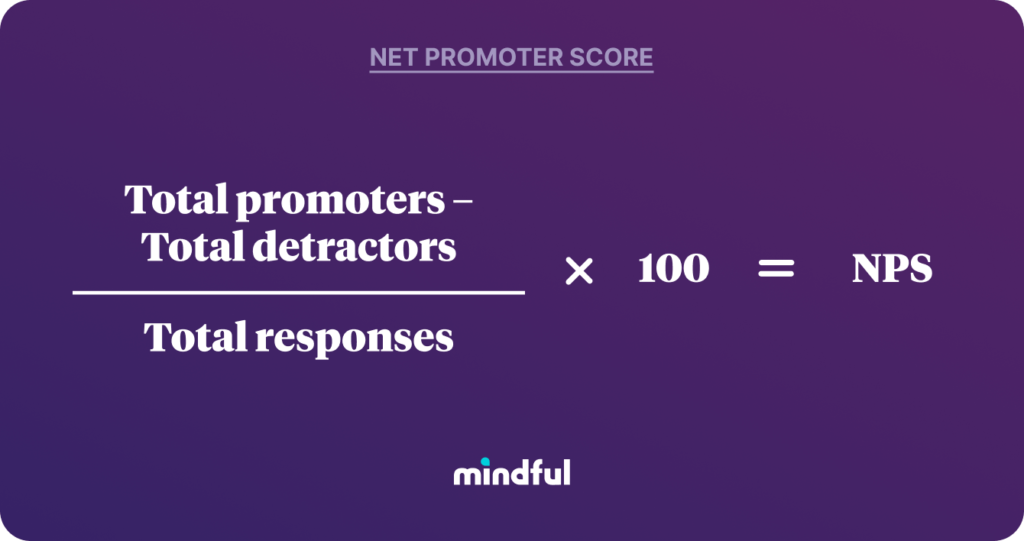
Net Promoter Score (NPS)
The NPS (or Net Promoter Score) targets brand loyalty with questions like “How likely are you to recommend us to others?” Customers are asked to rate (on a 0-10 point scale, where 0 is the lowest and 10 is the highest) whether or not they’ll recommend you to others. Then you assign that group as detractors, passives, and promoters.
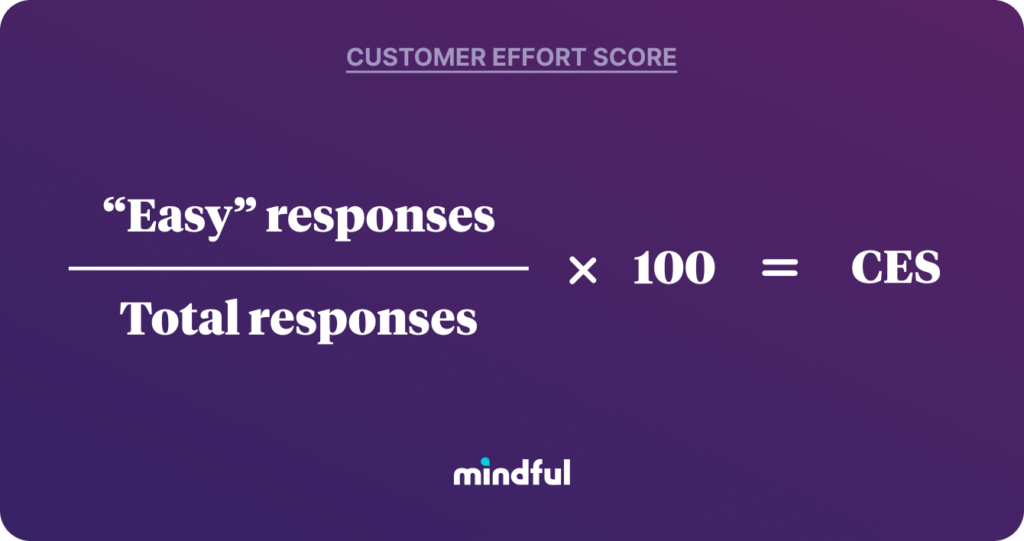
Customer Effort Score (CES)
The Customer Effort Score measures how much effort a customer has to go through to get something done with your company (including interactions with your customer service teams, conflict resolution, or trying to offer feedback). The CES questions usually ask, “How easy was it to get your issue resolved today? ”
Why is customer effort important? Gartner reports that 96% of consumers that experienced “high effort” situations were disloyal to a brand, as compared to only 9% for low effort.
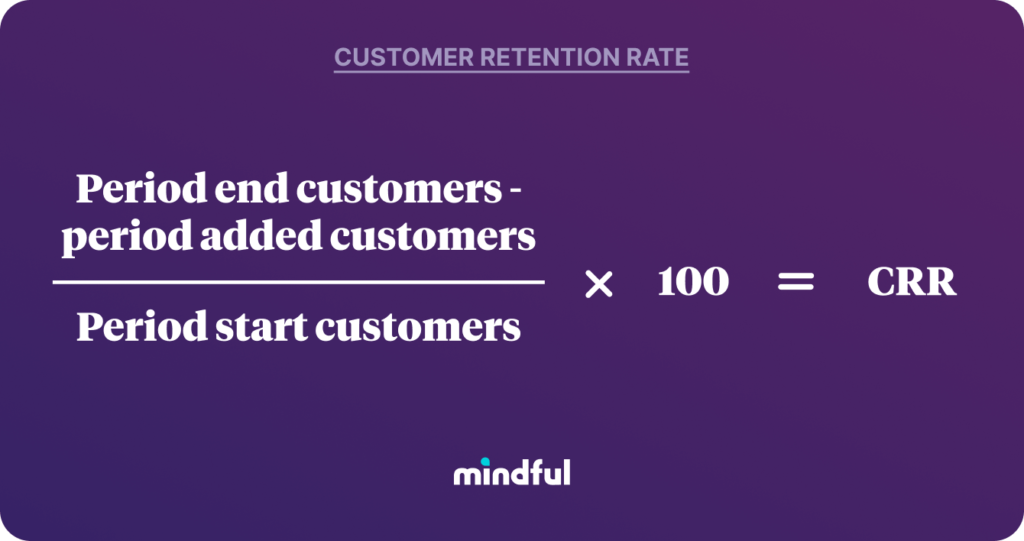
Customer Retention Rate (CRR)
Customer retention rate is an easier metric—how many customers have you lost versus retained over time? Customer retention is good for business because it’s seven times as costly to attract a new customer as it is to keep an existing one. Repeat buyers also spend more than new customers and drive new customers to your product or service.
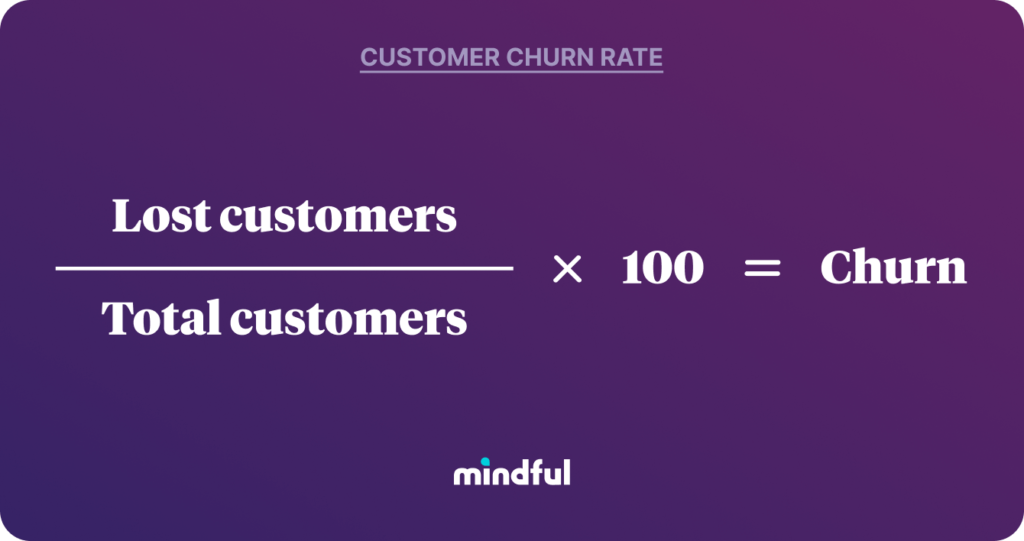
Customer Churn Rate (CCR)
Customer churn rate, or just churn rate, is another customer satisfaction metric that, like customer retention, basically lets you know how many customers you’re losing over a given period. Identifying a usable churn metric has to take a lot of other factors into consideration. Did you lose customers during a trial period? Over a seasonal shift? Everything from a downturn in the economy to a natural disaster can skew churn numbers, leaving you with a scary number and no strategy to fight it—which is why it’s important to balance CCR with other customer satisfaction metrics.
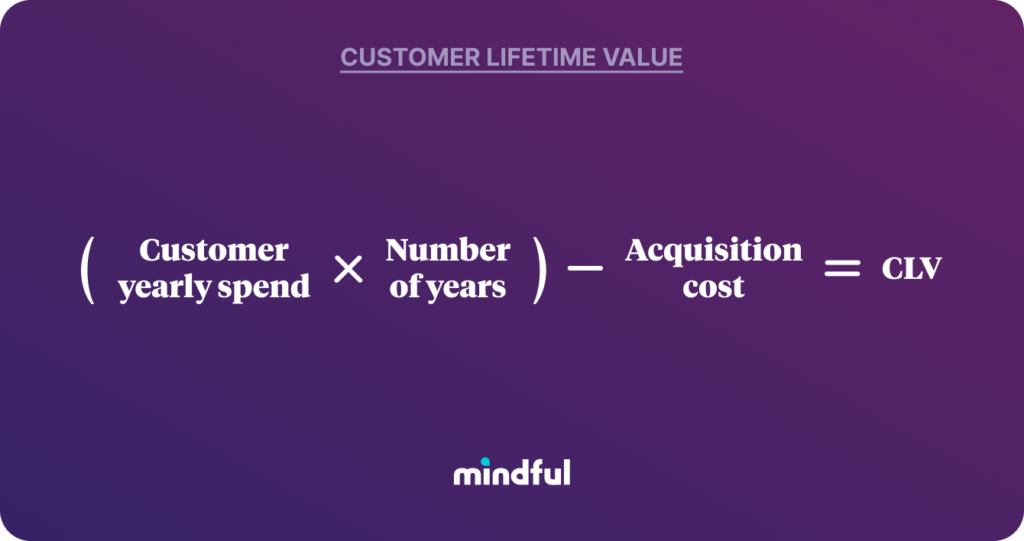
Customer Lifetime Value (CLV)
Customer lifetime value gives you a good picture of a customer’s journey with your brand. Instead of measuring what the customer is doing right now or recently, the CLV measures how much they’ve spent, on average, for how long—and measures more than loyalty. It maps out a definite fiscal relationship that can help customer service teams strategize retention.
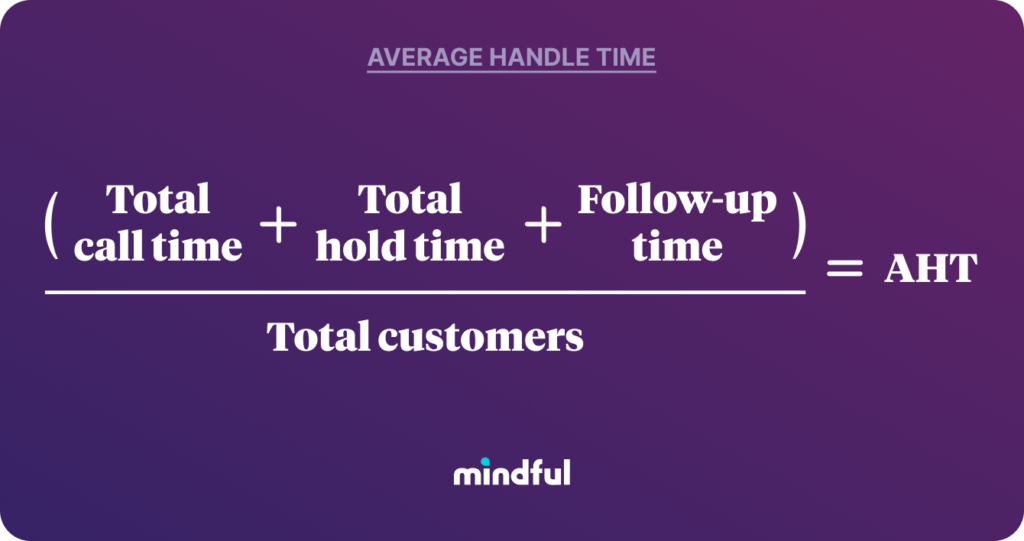
Average Handle Time (AHT)
Average handle time measures the average amount of time an agent spends on each call or ticket they open. Call centers use it to measure chat and email queues but also to find areas of improvement. It’s also useful for determining resource allocation for your call center.

Average Resolution Time
Average resolution time speaks to customer satisfaction if there are many complaints about call center times and wait times. Long wait times are an absolute deal-breaker with customers. Calculations are simple – total resolution time for all tickets resolved, divided by the number of tickets resolved gives you your average resolution time.
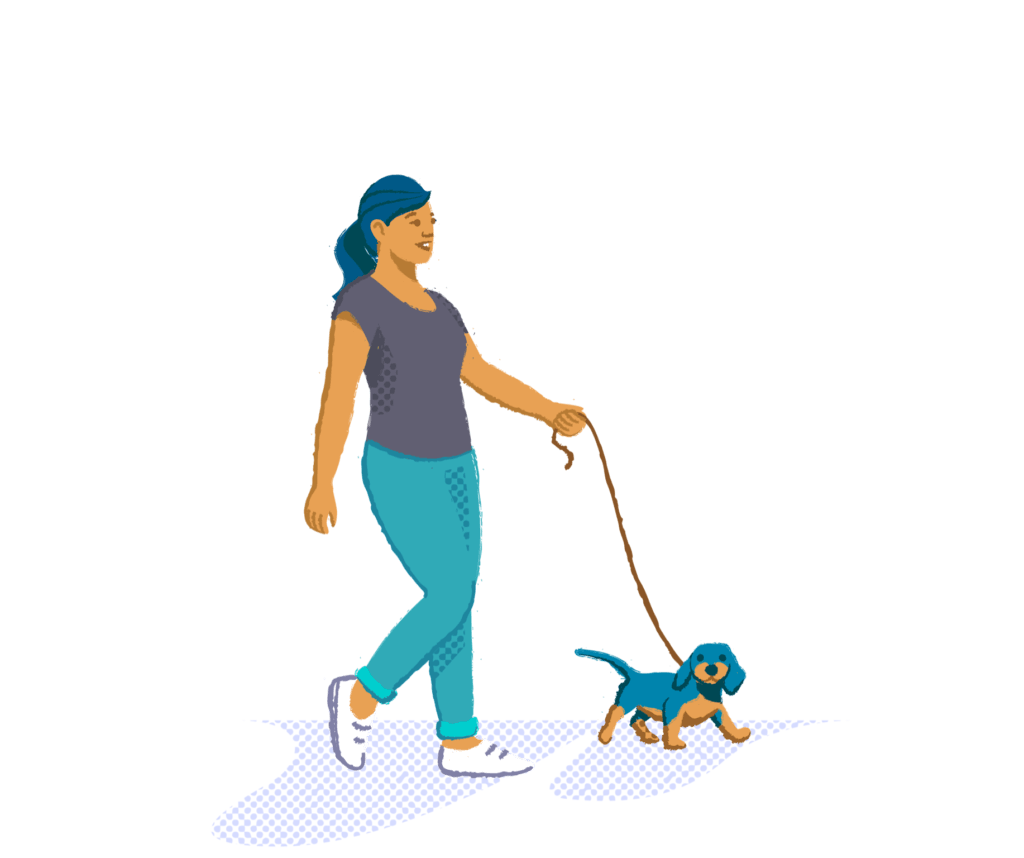
Average Hold Time
Since pioneering callback more than 25 years ago, we’ve found over the years that average hold time directly affects customer satisfaction and revenue. When customers have a positive phone experience, they’re more likely to recommend to a friend and buy again in the future.
Still digging into call center metrics? We wrote the book on ‘em—literally. Download your guide to call center metrics.
two
Develop a customer service strategy based on customer satisfaction.
So, you have all this customer satisfaction data—what do you do with it? How do you develop a strategy based on your results?
Leverage and lean into the data from CSAT surveys.
Identify pain points in your customer’s experience and find ways to fix them. CSAT surveys show customers complaining that hold times are too long? Invest in a callback service, like Mindful.
Focus your survey to develop a better customer service experience.
Should you focus your teams on product development? Should you work on delight (top-notch customer service)? Are your customer effort scores spiraling downward?
Meet with the development team and discuss why customers find it so hard to use the website/product/service—and offer a transition when they need to speak with someone.
Start with a goal.
When developing strategies that rely on surveys, don’t ask, “What questions should I use?” Instead, always ask, “What do I want to know?”
Map your customer’s journey and tie to the data.
Follow your customer by looking through survey data and mapping their experience. When did they onboard (CRR)? What do they like about the product or service(CSAT)? Are they promoters, passives, or detractors (NPS)? How much do they spend (CLV)?
Each metric gives you a different piece of the customer interaction—use those pieces to understand and empathize with the customer and share that data with all relevant departments.
three
Start with a great customer satisfaction survey.
Logic and empathy should be your main drivers when building a good customer satisfaction survey. Read your survey questions carefully, review them with multiple stakeholders, and revise them according to your customer’s journey. The key here is crafting insightful customer satisfaction survey questions.
- Write clear, short questions. If a question is worded poorly, the respondent will likely stop answering. If you didn’t care enough to write proper survey questions, why should they care enough to answer?
- Focus your objectives. Don’t ramble in a survey. Ask questions that pertain to information you need, and don’t waste the respondent’s time with frivolous or unfocused questions.
- Send it at the right time. Timing in surveys is important. Send surveys after key milestones—after a recent purchase (CSAT), a renewal request (NPS or CSAT), a periodic follow-up (NPS), or a negative experience with a customer service agent (CES or CSAT). And text a survey link as a follow-up to a call for higher take rates.
- See the survey through the customer’s eyes. If you don’t like taking surveys, ask yourself why, and use those prejudices to determine if your survey will be received by your customers in the same way.
Dos and don’ts for surveys
There may not be “tricks” to creating an effective survey, but there are definitely some tips you should follow.
DO: Target the right demographic.
If your customers fall in a specific gender or age demographic, target questions appropriately.
DO: Use the right rating scale.
Rating scales determine how you ask your questions. Here’s a quick overview of rating scales, but you can dig deeper in this post on designing customer satisfaction surveys.
- The numerical rating scale is best when you want simple, numerical data and straightforward answers. But it leaves the interpretation of responses up to the customer (i.e. what’s the difference between a 3 and 4?).
- The Likert scale is an industry go-to and used when the survey data results need to be focused by offering answers that give a more detailed look into the customer’s journey. But the wording is extremely important—if the answers are poorly worded, respondents may be unclear on how to answer or skip the question altogether.
- A comparative scale leverages previously acquired data to group problem areas together. Let’s say you know from previous surveys that both pricing and ease of transacting are top issues. To find out which is more problematic, ask the customer to prioritize the issues. Be cautious, though—the length of this survey can become unwieldy, and relies heavily on previous data to form the comparisons.
- A graphic or emoji scale is easy to understand and appeals to a younger demographic. It’s also quick and easy to implement because it involves less copywriting. The caveat? The answers don’t give much detail (like the Likert response does), and images have to be chosen carefully—operating systems process emojis or graphics differently.
DON’T: Use just one metric.
Only 37% of companies believe they’re using customer satisfaction metrics effectively. When relying on just one metric, you run the risk of developing a lopsided strategy. To get a bigger picture of the customer experience, use a combination of CSAT, NPS, and CES questions.
Kmart is a good example. Even with a strong increase in their ACSI (American Consumer Satisfaction Index score, which measures the CSAT ratings of over 200 companies), they lapsed into bankruptcy. Using a combination of all three major metrics may have prevented that.
DON’T: Lead the respondent.
It’s difficult to be objective with your own CSAT survey. But you definitely want to keep the questions from nudging customers one way or another. If the wording of the question causes the respondent to lean one way or the other, it’s time to reword the question.
four
Drive customer service strategy with omnichannel support.
As companies and brands explore better ways to improve customer satisfaction, omnichannel support (offering integrated support through different channels like phone, email, customer portals, and social media) is becoming more popular. More than 67% of consumers complain that repeating their issue to different agents in customer support indicates bad customer service.
Omnichannel support isn’t limited to phone and email. These days, your omnichannel support teams should include:
- Phone
- Text
- Social media
- Live chat and chatbots
- Self-help customer portals and knowledge bases
A strong omnichannel presence means that all channels are working together and with the same information in front of them.
Just because your company has a dedicated email team, chat team, and contact center doesn’t mean they’re an omnichannel support team. That’s multichannel support. Omnichannel support means that the chat team already knows what is going on with the customer when they’re transferred from the email team. Or a complaint to the call center that focuses on an aspect of marketing or development will be resolved with the help of both of those teams.
In order to increase customer satisfaction, you’ll have to find where your customers are. When a business doesn’t offer omnichannel customer support, they’re missing out on connecting with their customers. For instance, imagine a company that has no social media presence or doesn’t use text to reach customers. In this day and age, you’re negating a large part of customer engagement by ignoring omnichannel support. Omnichannel campaigns have a purchase rate that is 287% more than that for single channel approaches.
Customer satisfaction requires multichannel cooperation.
Multichannel cooperation refers to teams working together. When speaking of customer satisfaction and CX, multiple teams should be working together using the same data interpreted for their specific department.
Marketing and customer-centric messaging
These days, marketers are finding it’s not enough to just promote a product—they have to understand the customer experience in its entirety, from pre-purchase to sale to post-purchase. Using metrics like CSAT, NPS, and CES (or these other ten metrics CX teams should be using) will help the marketing team get a better snapshot of their customer.
In order to improve customer satisfaction, marketing strategy should focus on customer-centric messaging, which means your product is not important—your customer is.
Development and customer effort
Development teams should always pay close attention to feedback from customer survey data like CES (Customer Effort Score—which tells you how hard the customer had to work to get your product or service to deliver). Their focus should always involve a deep dive into the customer satisfaction data, especially the CES feedback. CES results will tell them how difficult a product or service was to use, and they can start their next development or update cycle based on that feedback. Their changes will help improve customer satisfaction by using the customer’s responses to make a better product.
Customer service and setting up great interactions
Customer service agents deal directly with the customer, as opposed to marketing and development, which deal with data. Their interactions with the customer are far more personal than any other department. A whopping 71% of customers expect agents to already have previously gathered knowledge of their interactions, so to improve customer satisfaction, agents need the empathy that CSAT, NPS, and CES data will bring.
summing up
Customer service is more important than competitive pricing.
Companies that focus on customer experience show 4-8% revenue growth over those that don’t. A good customer service experience creates loyalty, trust, and consumer confidence in your brand by turning happy customers into promoters. A bad one could haunt you for years and create a tornado of dissatisfaction—when a customer is unhappy with their experience, 13% tell 15 or more people. Creating a top-notch customer experience begins with developing better customer satisfaction techniques. A satisfied customer is a happy customer, and a happy customer will bring more customers to your brand.
Bottom line: Customer service could be the difference between gaining revenue and losing customers.
As pioneers of callback and virtual hold technology, we understand the customer service landscape and deploy Mindful to alleviate call volume, create better customer experiences by eliminating or reducing hold times, and help CX professionals find ways to deliver better experiences to their customers.
Ready to improve your CSAT?
See how Mindful can improve NPS and CSAT, or get started with a CX expert at Mindful to create a great experience for your customers.
Get started



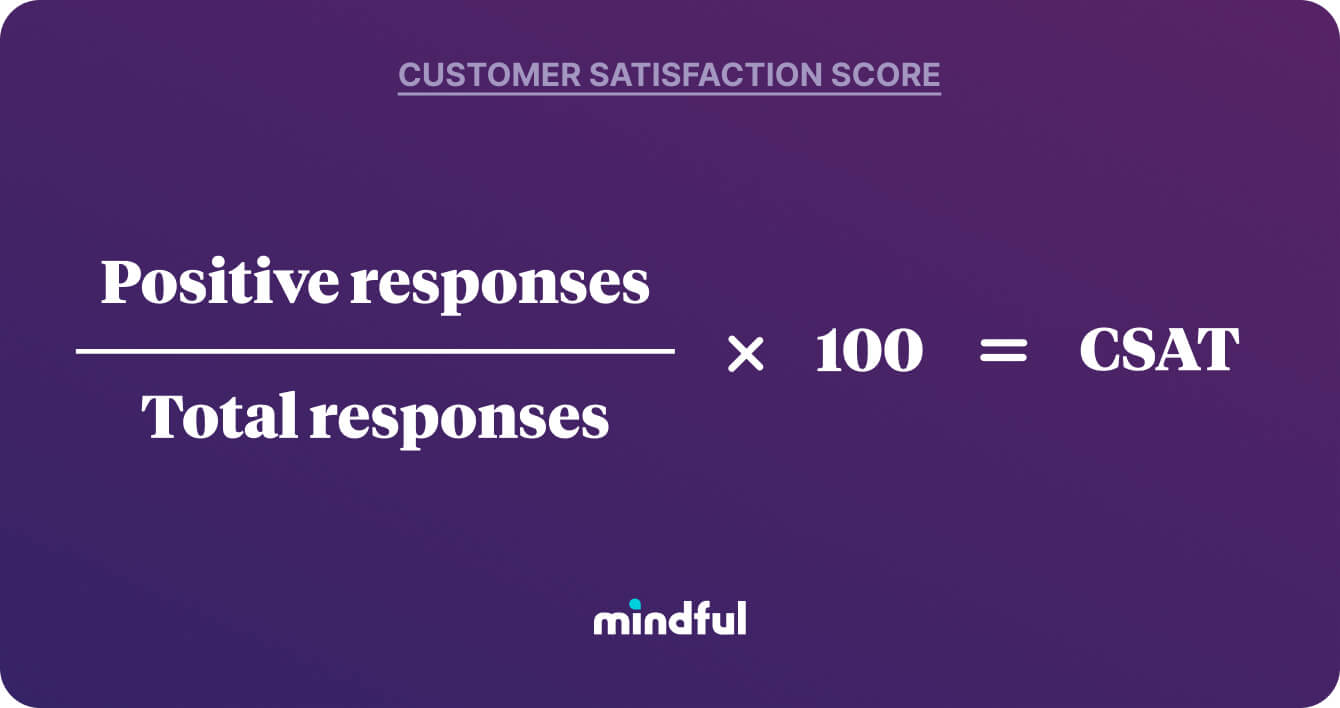

Social media
An effective customer service department should have a separate team that just answers social media queries and relays problems or concerns back to the CX team. Quick responses to problems are a good customer satisfaction practice. And nowhere will negative responses be more apparent than on your social media channels.